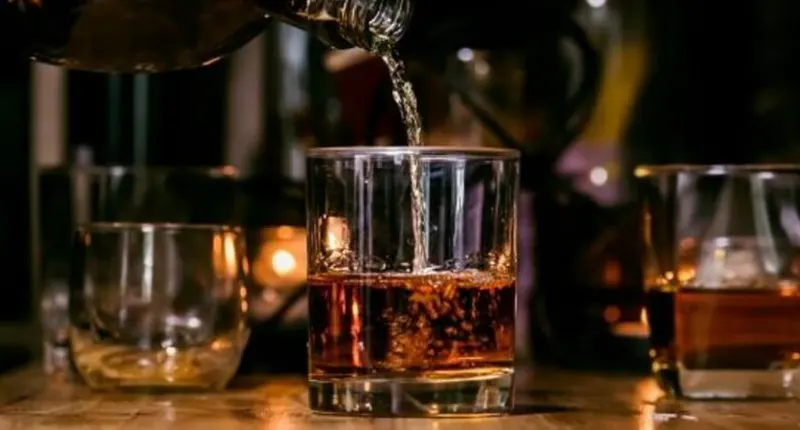
So starts a chapter of the Big Book of Alcoholics Anonymous – the virtual Bible of recovery from alcoholism and the basis of all 12-step recovery programs. And it works – according to the testimony of millions of recovering alcoholics and addicts in the nearly 70 years since the inception of AA by its two founders, Bill Wilson and “Dr. Bob”, Dr. Robert Smith.
In our age of science, secularism, and skepticism, such simplistic answers seem almost mythical, perhaps purely psychological. The basis of the success of 12-step recovery programs remains incompletely studied and poorly understood. To those in recovery, this comes as no surprise, for they attribute their success to a fundamentally spiritual process of transformation, one therefore not likely to reveal its secrets through the rigors of scientific study. But the overwhelming power of addiction in the lives of those affected — seemingly immune to the force of will, ravages of disastrous consequences, or the intervention of psychology, counseling, or pharmacotherapy — succumbs only to the apparent impotence of humility, honesty, and submission to others.
Despite our culture’s formidable expertise in psychology, neurophysiology, pharmacology, and social science, despite billions spent on the war on drugs, we have failed miserably at solving the addiction problem. Yet, the very fact that anyone can recover from the hopelessness and destructiveness of this disease is remarkable. Millions have done so — unaided by medical science, psychiatry, or neuropharmacology — and it is truly a phenomenon.
In some regards, recovery programs like AA are relatively simple: if you don’t drink or take the drugs, you don’t start the physiological process, which creates an intense craving for more of the same. Furthermore, the adverse consequences of substance use also disappear: if you stop drinking, you don’t get a DUI or end up in jail for vehicular homicide. If you cease shooting up, your chances of acquiring hepatitis, AIDS, or endocarditis go away. Most alcoholics and addicts who stop drinking or using find their lives get better relatively quickly: their health improves, many social conflicts are resolved, they keep their jobs, and they become more stable financially. Reason would dictate that this is the only sane way to live. But reason evades the addict even when dry, and such logical and will-based attempts at sobriety are surprisingly short-lived as a rule.
It is not clear whether the thought disorder of addiction — the obsessive desire to pursue a substance despite diminishing euphoric returns and increasingly dire consequences — is acquired as a result of the intake of large quantities of drugs over time or is inherent in the underlying physiology and genetics of addictive disease. The secondary psychological compensation mechanisms — denial, rationalization, minimization, etc. — are likely a result of the need to accommodate the cognitive dissonance resulting from obsessive-compulsive drug pursuit and the spiraling negatives resulting from such abuse. Herein lies the trap for willpower-driven abstinence: it does not remove the obsessive component. Therefore, the mind’s incredible capability to use denial to achieve what it desperately desires is undermined. Here is where the true wonder of recovery lives: successful recovery provides the tools to overcome the obsession and the profound denial that enables it.
So, how do 12-step programs like AA accomplish this feat? Recovering addicts and alcoholics are quick to reply that they don’t understand it; it just works. However, it is not hard to postulate some mechanisms by which it succeeds.
Cessation of drinking or drug use after a period of physical withdrawal (a high-risk period both physically and for relapse) ultimately removes the physiological craving induced by the drugs themselves. However, the psychological obsession remains and is typically intense, often for many days, months, or even years. The continual support of peers who have endured and survived this extraordinarily difficult passage is critical during this period. Group meetings, frequent phone contact, and close association with recovering individuals are crucial.
This is the principal value of treatment programs, especially those with inpatient confinement. The addict is separated from their drug and isolated from high-risk environments and associations, which can trigger the potent denial mechanisms to their detriment. The alcoholic or addict is also thrown into forced association with others in the same dire straits, as well as those in recovery who understand the problem clearly and objectively. This provides an excellent opportunity to break down the self-deception and dense denial propagating the problem. It is easier to see a problem in others than ourselves — particularly when their experience parallels your own, and others’ weaknesses and shortcomings are openly shared. The alcoholic or addict may not believe in the principles or program of recovery. Still, it is hard to deny the proof of its effectiveness in the lives of those who have traveled the same journey, successfully overcoming their liability.
There is a certain amount of magical thinking among public policymakers and pundits about the value of drug and alcohol treatment, however. Treatment facilities do not have some magic mojo they can whip out to convince the addict of the errors of his ways, forever setting him on the path to a sober life. What must occur is that the alcoholic must be willing to change and trust the guidance of others to succeed at something far too complex to master by oneself. The trust of others also runs counter to the endemic paranoia of addicts. These are no small hurdles for those who enter treatment, even willingly – and for those involuntarily confined without sufficient desire to change, they can be insurmountable.
This is what alcoholics call “hitting bottom”: pain intense enough and willingness sufficient enough to become determined to change and follow the direction of others to overcome the hopelessness of addiction, no matter how foolish or implausible the process seems. Self-denial — not self-confidence or self-control — is the key ingredient. Through impenetrable denial and determination to resist change no matter the cost, some never reach this point. “Their chances,” as the Big Book says with classic understatement, “are less than average,” with relapse, disaster, and often death the ultimate fruit of their recalcitrance.
The surprising benefit of pursuing successful recovery lies not only in deliverance from the obsessive destructiveness of alcohol and drug abuse but in the inevitable acquisition of life skills and peace of mind, which are enormously positive and enriching. Those successfully recovering from addiction — especially those who maintain relationships with others in recovery, pursuing honesty, self-sacrifice, and regular efforts to enhance their spiritual lives — are often far better adjusted than even emotionally healthy individuals who have never abused drugs or alcohol. What is evident here are the fruits of brokenness: a deep humility from reaching the end of our resources, the gift of grace manifest in selfless giving by others so humbled, and the power of God to transform lives, overcoming evil with good.





